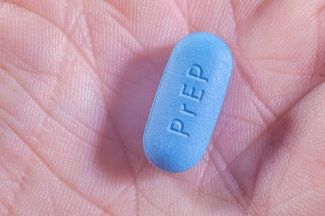Perceptions of and Willingness to Start PrEP among People Who Inject Drugs
People who inject drugs are at high-risk for HIV infection, but very few are interested in PrEP prescriptions.

People who inject drugs (PWID) are one of the most high-risk groups for contracting HIV. However, PWID have been reluctant to begin using pre-exposure prophylaxis (PrEP), a proven effective method of HIV prevention. Suspecting one reason for this could be low access to care, investigators from Tufts Medical Center examined inpatient admissions for missed opportunities to provide PrEP to PWID.
The study, presented virtually at last week’s IDWeek conference, analyzed inpatient prescriptions for tenofovir disoproxil fumarate-emtricitabine (TDF-FTC) from October 2019-August 2020 to assess the provision of PrEP to PWID. Investigators anonymously surveyed physicians in the Infectious Diseases ward service about their perceived barriers and practices regarding the provision of PrEP to PWID.
Investigators also approached PWID admitted from November 2020-May 2021 to provide information about PrEP and offer initiation before the patients were discharged. From these interactions, they analyzed patient perceptions of and interest in PrEP.
During the study period, 16 prescriptions for TDF-FTC were provided to PWID upon their discharge, none of which were for PrEP. The eight physicians surveyed cared for an average of four PWID a week, and five of the eight reported that they offered PrEP to at least one PWID during their most recent week of service. The most common (5/8 physicians) barrier to prescribing PrEP to PWID was uncertainty of adherence and follow-up.
The investigators approached 30 PWID patients, of which 14 had prior knowledge of PrEP.
18 were willing discuss further, but only four were accepting of PrEP, and of these, two were provided prescriptions. Among the PWID who declined PrEP, 13 denied equipment sharing, four denied active drug use, seven committed to future abstinence, three were unwilling to use a daily medication, two were concerned about the medication’s side effects, and one declined due to the stigma surrounding PrEP.
The investigators concluded from their study that initiating PrEP in the inpatient setting may not be effective among PWID. The most common reason for declining was perceiving oneself as low-risk for HIV infection, but a significant number of PWID were interested in learning more about PrEP.
The investigators suggested that the inpatient setting may be better suited for initial counseling and education, with the potential for prescribing PrEP in the outpatient setting.
